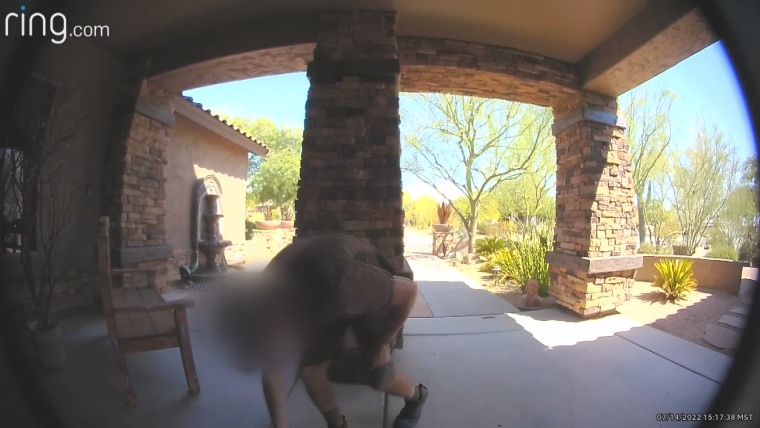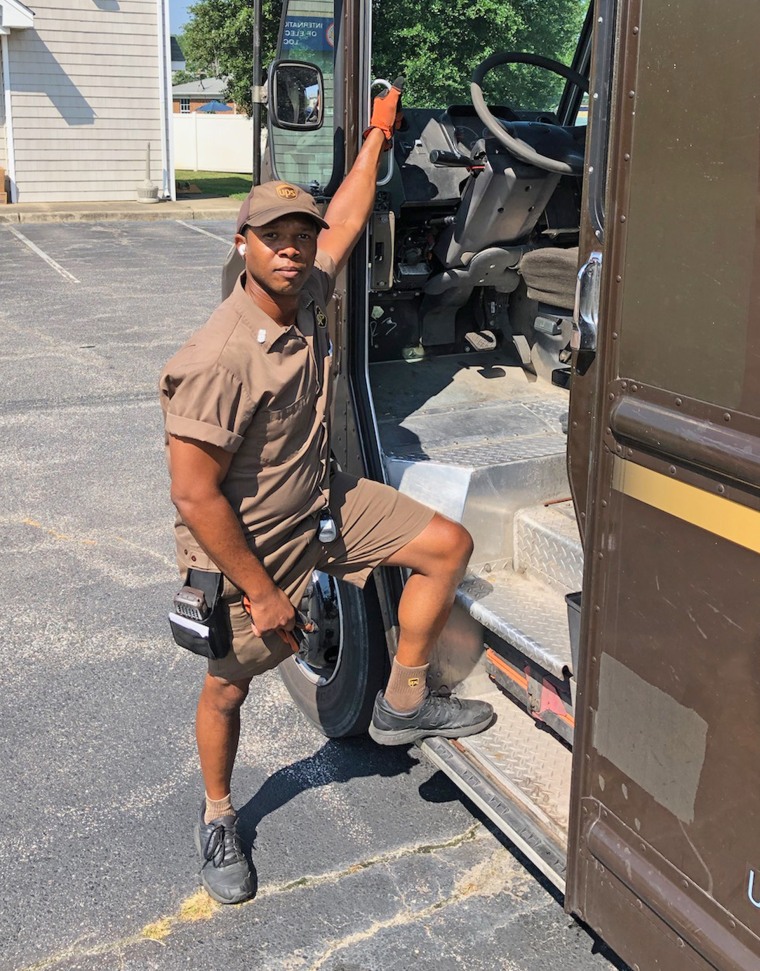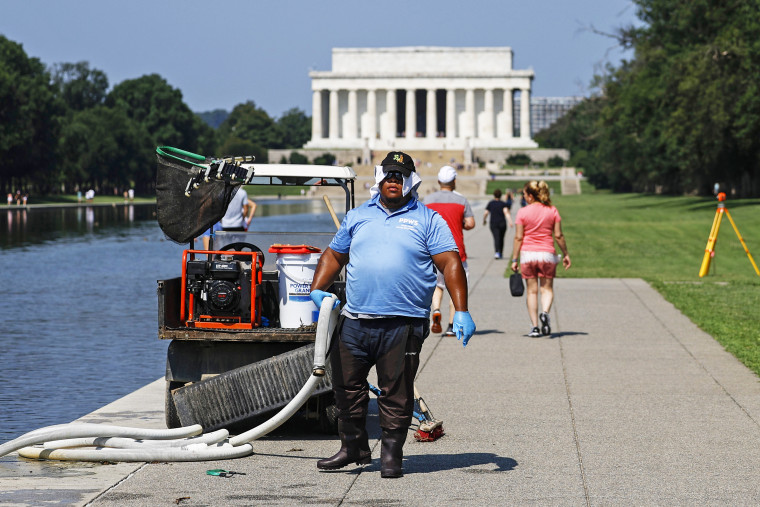OSHA is years away from issuing a federal heat standard that would protect workers. Advocates say it is dire now.



Amid a punishing global heat wave, the U.S. agency that sets workplace safety standards is likely many years away from issuing a federal rule that would protect workers from dangerously high temperatures, experts and a former agency official said.
The Department of Labor's Occupational Safety and Health Administration began the process of creating such a regulation in October but is bogged down by a lack of resources, strong industry opposition and bureaucratic procedures that can span decades, Jordan Barab, a former OSHA official, said.
"All of those create huge barriers to getting things done in a reasonable time frame," said Barab, who was OSHA's deputy assistant secretary of labor in the Obama administration.
The agency is early into its rule-making process, which can take 15 months to 19 years from start to finish and averages more than seven years, according to a report by the U.S. Government Accountability Office.
The report published in 2012 cited procedural requirements, shifting priorities and a rigorous standard of judicial review as the major roadblocks.
"Rulemaking takes time, and it's critical that we get it right," OSHA Assistant Secretary of Labor Doug Parker said in a statement.
But advocates say outdoor workers — many of whom are people of color — cannot wait as climate change makes extreme temperatures more likely.
"It's obvious that the climate is heating up, and workers are at increased risk," Barab said. "That's getting worse and worse."
As temperatures surpassed 90 degrees in Pasadena, California, last month, a 24-year-old UPS driver collapsed and died in his truck moments after delivering a package, his family said.
The county's medical examiner has not yet said what caused the death of Esteban Chavez Jr., but his father blamed the heat and the demands of the job.
"Those trucks are a hot box," Chavez Sr. told KTLA. "They have all these guys running around, delivering packages and trying to meet their quotas and do their jobs."
More recently, another UPS worker collapsed in the Arizona heat — a moment captured on a homeowner's doorbell video camera — but survived. The unidentified worker can be seen slumped over on the ground, seconds after dropping off a package.

Doorbell video shows UPS driver collapse in extreme Arizona heat
July 18, 202201:11
UPS did not immediately comment Friday. Earlier this week, in response to the Arizona driver who collapsed, the company said its drivers are "trained to work outdoors and for the effects of hot weather." It also said air conditioning is "ineffective" in delivery trucks because they make frequent stops.
Many more incidents go unreported as do heat-related work injuries and deaths, said Juley Fulcher, who works with Public Citizen, a nonprofit group that advocates for consumers and workers.
From 2011 to 2019, scorching temperatures led to an average of 38 worker deaths a year, according to the U.S. Bureau of Labor Statistics. In 2019 alone, 43 workers died from heat exposure, and more than 2,400 others suffered serious injuries and illnesses, OSHA said.
But Fulcher said the figures are likely significantly higher because of reporting discrepancies. A recent Public Citizen report found that heat exposure is likely responsible for 170,000 work-related injuries and around 600 to 2,000 deaths each year.
Farmworkers, the vast majority of whom are migrants, are the most vulnerable to heat-related injuries and illnesses, the report said, while construction workers are more likely to die.
Construction workers, who make up 6% of the total U.S. workforce, accounted for 36% of all occupational heat‐related deaths from 1992 to 2016, according to a 2019 report by the Center for Construction Research and Training, an organization that works with OSHA to address construction hazards.
And nearly 90% of landscaping and groundskeeping workers in 2020 were required to spend more than two-thirds of their working time outside, compared to 4% of all civilian workers, according to the Bureau of Labor Statistics.
"A lot more workers are dying in the heat, and it's not getting recorded that way," Fulcher said.
'The sweat does not stop'
In Virginia, where temperatures are expected to linger close to 100 degrees this weekend, UPS driver Nick Jones keeps a sweat towel, Gatorade and some watermelon in his delivery truck to keep cool.
Jones, 38, says that when he stops at red lights, he can see visible heat waves through his windshield.
"It's excruciating," he said, adding that his truck is not air conditioned. "Nowadays, I'm using the towel every stop because the heat is just so intense. The sweat does not stop."
Both the heat and the demands of the job have intensified over the last 17 years that Jones has been driving for UPS, he said.
Packages have increasingly grown to include sofas and dressers, which Jones has to sometimes carry up multiple flights of stairs in apartment complexes. "There's no limit to what a person can order over the internet," he said.
The back of the truck is about 30 to 40 degrees hotter than the air outside, he said. To escape the sun momentarily, he said he walks into nearby convenience stores for 10 minutes before continuing his route.
"It's a metal box. It's all brown, and it's attracting heat all day," he said.
 Nick Jones, 38, of Virginia, has been a UPS driver for 17 years.Courtesy Nick Jones
Nick Jones, 38, of Virginia, has been a UPS driver for 17 years.Courtesy Nick Jones
Workers and advocates are urging OSHA to expedite its rule-making process. There are some routes the agency can take to speed up the process. But OSHA, understaffed and underresourced, is not likely to do so, Barab said, out of legal caution and "bureaucratic inertia."
Last year, Public Citizen petitioned OSHA to issue an emergency temporary standard, which the group said would carry the same force as a permanent standard for at least six months.
The petition is still outstanding. But that route is legally fraught and tends to be overturned by the courts, Barab said.
Meanwhile, lawmakers are pushing a proposed federal bill that would require OSHA to create measures such as paid breaks in cool spaces, access to water and limitations on the time workers are exposed to heat.
The legislation is named after Asuncion Valdivia, a California farmworker who died in 2004 after picking grapes for 10 hours straight in 105-degree temperatures, U.S. Sen. Alex Padilla, D-Calif., said.
"This is not a far-off threat. We are living it now, and we are living it more each day," he said at a news conference this week. "We can't afford to wait."
"We can't afford to wait."
U.S. Senator Alex Padilla (D-Calif.)
In a statement, OSHA said it was reviewing Public Citizen's report and that it has received thousands of comments that will "help guide our work in developing an all-encompassing final rule based on the most recently available science and data."
"We will continue to improve our efforts and explore opportunities to help employers and workers decrease the risk of heat exposure," Parker, the agency's assistant secretary, said.
Workers are currently covered by OSHA's "general duty clause" protections, which require employers to keep workplaces "free from recognized hazards," including heat.
But a specific federal standard would significantly increase employer compliance, said Chris Cain, executive director of the Center for Construction Research and Training.
"It raises that issue to a much higher level," she said. "And they, in turn, put in place controls to a much greater extent than they do when they're simply under threat of a general duty clause violation or through education efforts."
"When it's actually finalized," Cain said, "is when we really see a change."
 An employee with Please Purify Water Solutions works at the reflecting pool at the National Mall in Washington, D.C., on Wednesday.Anna Moneymaker / Getty Images
An employee with Please Purify Water Solutions works at the reflecting pool at the National Mall in Washington, D.C., on Wednesday.Anna Moneymaker / Getty Images
At least 50,000 heat-related injuries and illnesses nationwide likely could be prevented if OSHA implemented a heat standard, Public Citizen said, citing the success of a statewide heat safety standard in California.
If OSHA does not finalize a federal heat rule by 2024, advocates worry it will be completely dropped if the GOP wins the presidency. Under the Trump administration, the number of OSHA inspectors declined as hiring stalled.
"If we get a Republican in office, in all likelihood, it'll be stopped in its tracks," Fulcher said.
Barab warned that the issue is much more dire than statistics indicate. Chronic heat exposure can severely affect the kidneys and the brain, he said, and many cases are not traced back to work, particularly when a worker does not collapse on the job.
"The effects of heat are much, much greater and broader than just people who die of heatstroke at work," he said. "We're looking at a much bigger problem than we quite realize."



Always behind the curve apparently….
"trained to work outdoors and for the effects of hot weather."
Since they have also become arbiters in gun shipping definitions, it appears they've become quite stupid. I would have to guess that hot weather training teaches you how to fall on concrete.
Our heat standard was pretty simple.
Drink beau coup water.
Definitely
Most normal people have common sense enough to hydrate and cool down
depends on ones definition of normal
Exactly
Morning..have had hot and cold temperature regulations here for years...if it hits a certain high temperature 35oC I think it is outdoor work sites etc close down and workers are sent home. Steel etc gets to hot to handle.
Use to work at an Alcoa Aluminium smelter would hit 56oC in the potrooms on 40oC days. Only allowed to stay in there for 20 mins at a time and drink heaps of water etc.
Extremely rare to lose anyone here from heat as the unions would be going out on strike etc and the Employers can be jailed for any work related death.
Most companies find alternative work for employees as well eg work indoors or in shade or basic maintenance work not heavy work until the heat passes.
A bit of common sense goes a long way...
No doubt, which is why I found this article so surprising.